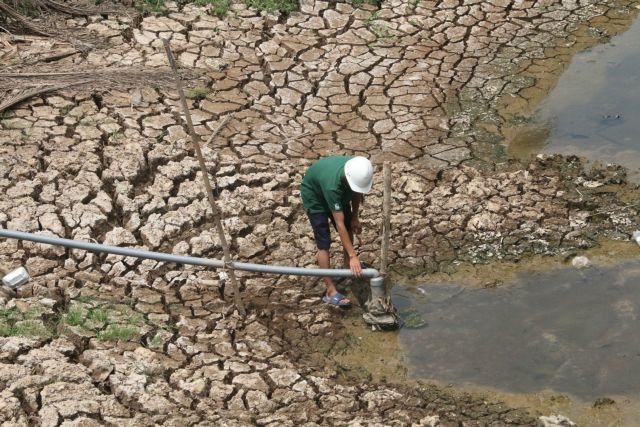The Mekong Delta is experiencing the most serious drought and saline intrusion in its history. A report found that about 130,000 hectares of fruit trees and 150,000 households have been affected by the drought and saline intrusion.

Local authorities are seeking the government’s permission to build more reservoirs to store freshwater. Some experts believe that it is necessary to utilize modern technology to turn seawater into freshwater. Others have suggested leading water to the Mekong Delta through a transmission network.
Duong Van Ni, director of the Hoa An Biodiversity Research and Experiment center, said the solutions can help, but cannot solve the problem.
| If the local population continues to grow uncontrollably, all measures to be applied, from seawater filtering to water transfer from the east to the west, will become useless, experts say. |
According to Ni, there are three major problems that need to be addressed.
First, the local people’s preparation on the spot.
Second, local authorities at different levels need to program concentrated clusters of population and select technical solutions to provide freshwater to every cluster.
Third, the central government needs to program the development for different zones. There must be rice growing areas to ensure food security. Meanwhile, farmers in other areas can shift to other crops or livestock.
The government, in its Resolution No 120 on solutions for the sustainable development of Mekong Delta, pointed out that freshwater, brackish water and saltwater are all natural resources which can serve economic development.
In the past, all the measures applied just aimed to prevent saltwater and store freshwater to serve rice and crop cultivation.
However, Ni noted that it will take time to change the viewpoints of ministries, branches and local authorities.
At present, local farmers are seriously lacking freshwater. However, Ni believes it is not difficult to deal with the problem. Local people for hundreds of years had the habit of storing water in tanks and jars.
In the Mekong Delta, there are areas where the rainfall is up to 2,000 mm a year. So, each household just needs to store water in tens of jars and tanks to have enough water for use during the 3-4-month dry season.
According to Ni, the most important solution is for local authorities to re-plan the development of clusters of population and design specific water supply solutions for each cluster.
For example, if a cluster of population is located close to the sea, digging lakes and ponds to store freshwater is not advisable. The solution in this case wouldbe to build a plant that converts saltwater into freshwater.
Le Ha

Drought and salt water in Vietnam will be under control by 2030
Nguyen Van Tinh, director general of the Department of Water Resources, speaks about Prime Minister Nguyen Xuan Phuc’s decision to grant VND500 billion to control salt water intrusion in eight Mekong Delta provinces

Severe drought, saline intrusion can be predicted months in advance: expert
Nguyen Huu Thien, an independent expert on the Mekong Delta, said he warned of severe drought and saline intrusion in mid-2019 after observing the flood season and the salty-fresh water boundary of the river.
 If the local population continues to grow uncontrollably, all measures to be applied, from seawater filtering to water transfer from the east to the west, will become useless, experts say.
If the local population continues to grow uncontrollably, all measures to be applied, from seawater filtering to water transfer from the east to the west, will become useless, experts say.